Learn how to set clear and realistic employee expectations for remote work and improve remote communication with our free, expert tips.

.png)
Strategy is an important component of internal communications. Ensure you’re communicating through the right channels at the right frequency with our Internal Communications Channel Audit worksheet.
Access NowIt all started with COVID-19. The growth of a remote workforce surged with businesses worldwide rapidly adopting work-from-home measures to curb the spread of the virus. This led to a sudden and widespread shift to remote work in early 2020. But lots of people struggled to engage with the remote workforce, and this shouldn’t be a surprise.
Between 2019-2021, the remote workforce tripled according to the US Census. This raised many questions including how to set employee expectations for remote work and how to increase engagement using remote communication.
Now things are changing. A podcast posted by McKinsey on February 6, 2025, reveals that “return to office” (RTO) is on the rise, offering both opportunities and challenges. But it isn’t necessarily because employees don’t want to work remotely.
“We presume, based on our experience and what we’re seeing in the research, that most people are coming back into the office because they’re being asked, formally or informally, to be there more often.”
Bryan Hancock, McKinsey Partner and talent expert
Project.co’s 2025 business communication statistics provide some basic information based on a small survey of 361 people in late 2024.
Remote work isn’t a new concept. We used to refer to it as telecommuting or telework, where remote employees were able to perform their job duties from a location outside of the traditional office setting. Because the location is remote, it requires remote communication - the exchange of information, messages, or ideas between individuals or remote teams who are not physically present in the same location.
Typically, communication involves the use of digital or remote communication tools and technologies such as video calls, emails, instant messaging, and collaborative platforms to facilitate effective individual and remote team communication.
Upgrade your company’s internal comms to enhance employee communication
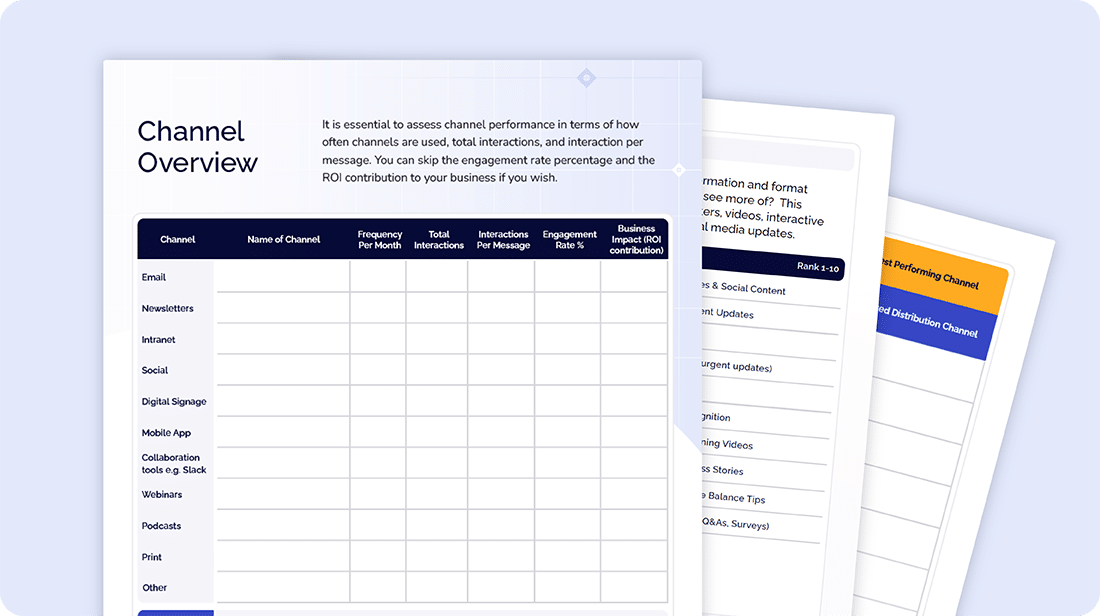
Why is Effective Remote Communication Important?
Even with RTO, remote work continues to be a significant aspect of the modern workplace, with data highlighting its prevalence and the challenges it presents. Insights suggest that while remote work offers benefits such as increased focus time, it also necessitates effective communication strategies to maintain team cohesion and productivity.
Since COVID-19 hit in 2020, remote work has transformed how teams collaborate, making clear and efficient communication more critical than ever. Without the right strategies, misunderstandings, missed deadlines, and disengagement can quickly follow. There is evidence that strong remote communication fosters alignment, trust, and productivity, ensuring that teams stay connected and work towards shared goals, no matter where they are.
According to McKinsey, by mid-2022, 58% of Americans had the opportunity to work from home at least once a week, and 35% had the option to work from home five days a week. This indicates a direct correlation with the impact of COVID-19.
While many companies are embracing RTO, there are signs that not all employees want to return to their workplaces fulltime.
Vena Solutions, a cloud-based platform focused on financial planning and analysis for business, states that as of January 2024, 46% of total job applications were submitted for remote positions, even though these roles comprised only 10% of available listings. This disparity underscores the sustained demand for flexible work arrangements.
One major problem is that without face-to-face engagement, it is difficult to create a cohesive workplace where everyone feels included, heard, and happy. It has also caused a massive culture shift that includes many risks along with rewards. Nevertheless, there are proven benefits that show us why effective remote communication is so important.
Hubstaff has been researching issues relating to remote work for years. Their 2021 Remote Project Management Report indicated that 45.8% of remote managers regarded a lack of communication as the biggest challenge to managing remote work.
A much more recent Hubstaff study highlights the benefits remote work continues to offer — together with some of the challenges. Remote Workers Engage in Deeper Work With Fewer Interruptions, Says Hubstaff Data states:

Overall, it shows that remote workers engage in more "focus time" — namely periods of deep work with minimal distractions — than their in-office counterparts. On average, remote employees spend 273 minutes (4.55 hours) per day in focused work, compared to 223 minutes (3.72 hours) for those in traditional office settings. Despite this increased focus time, remote managers continue to face challenges in communication and team engagement.
That’s not going to change anytime soon. But, what does successful remote communication look like? How do you host engagement activities for remote workers in a fragmented work environment? What’s the difference between individual and remote team communication?
The answer is that there are many ways to ensure everyone’s success. Some strategies include setting standards right off the bat, measuring communication engagement, and planning social activities. Which strategy you choose needs to cater to individuals working alone and/or remote teams?
Effective remote communication falls into two main categories: synchronous and asynchronous, each with written and verbal formats. A Grammarly Business and The Harris Poll report highlighted this so-called "new work communication ecosystem" in The State of Business Communication 2023. The framework itself has long been recognized in fields like virtual collaboration and computer-supported cooperative work. However, it is worthy of recognition in the contemporary workplace, especially when organizations hire employees who work remotely.
Understanding these communication types helps remote teams choose the right methods to foster clarity, productivity, and engagement in a digital work environment.
“Historically, workplaces have existed so people could gather to discuss, negotiate, strategize, and even connect socially. In other words, where and how we worked was in service of human communication. Now, technology allows for a constant flurry of instant messages, which means we no longer have to be in the same place at the same time to collaborate with each other.”
The State of Business Communication 2023
More recent research provides a contemporary perspective on the evolving dynamics of remote communication, highlighting the significance of balancing synchronous and asynchronous methods to optimize team performance.
Meeting Bridges: Designing Information Artifacts that Bridge from Synchronous Meetings to Asynchronous Collaboration submitted to Cornell University in 2024 explores the integration of synchronous and asynchronous communication methods in remote work settings. The study emphasizes the importance of creating effective transitions between real-time meetings and subsequent asynchronous activities to enhance collaboration and productivity.
But what does this mean?
Synchronous communication takes place in real-time, usually in the form of texting, in-person or phone meetings, or via video links. When communicating remotely, it enables instant feedback and collaboration, mimicking the responsiveness of in-person interactions.
Synchronous opportunities to bond with co-workers and participate in something fun might not sound like a hit. However, if you pick the right remote employee engagement activities then it might end up being a fun and interactive way to get to know each other.
One activity that makes people feel good about their work is a virtual banquet for awards and recognition. Who doesn’t like being recognized for their accomplishments or shown appreciation for their hard work? People will also see all of the unseen work that their peers are doing.
While it may have sporadic attendance, a scheduled lunch date where anyone can join and eat could be a great way to build relationships. Creating opportunities for in-depth conversations and closer bonds is better in small groups. So, the people who show up will usually get a lot out of it.
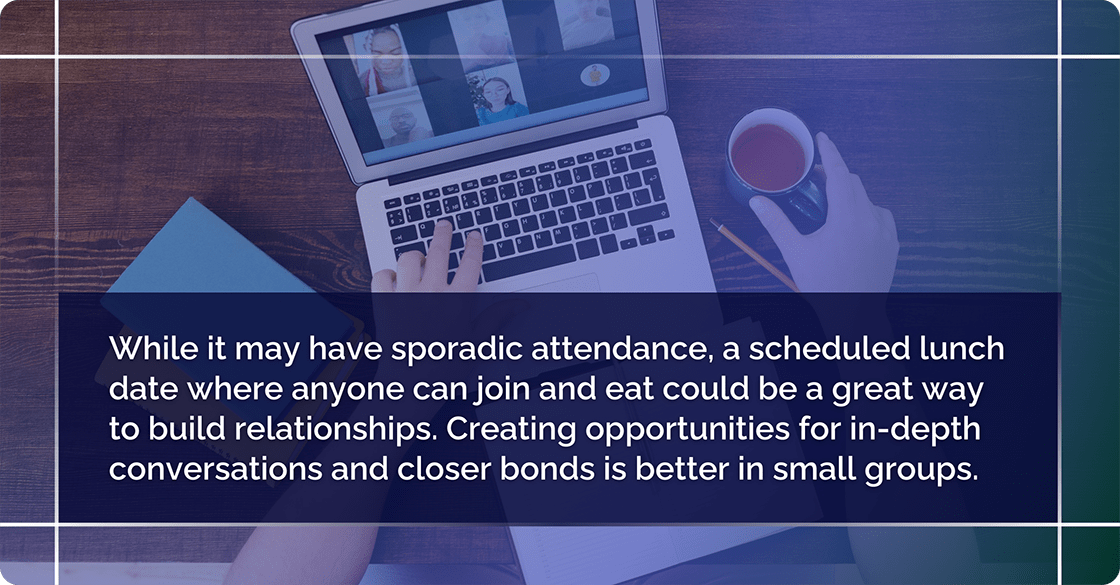
Something that requires more team building and intense focus is an office olympics. While this isn’t a remote activity, there is still room for remote employee engagement activities that take place in person. Solving puzzles, engaging in physical challenges, and working as remote teams can put your people to the test. This is an awesome opportunity to gauge how well they work together. It is important to the office and fun to try and solve something as a group!
At Cerkl, we do a Broadcast Bowl with different teams and activities. Everyone meets at the office for one day and gets to see each other face-to-face, with different teams competing to win the trophy. You could do something similar with remote teams.
Basically, the opposite of synchronous communication, asynchronous communication doesn’t take place in real-time. Instead, it is usually carried out via email, test-based chat, and online document collaboration. Announcements also fall under the definition of asynchronous communication.
The State of Business Communication 2023 report points out that most knowledge workers (72%) now use asynchronous communication. Even more business leaders (84%) use it as well. Their study found that it accelerates team performance because it makes their jobs more flexible.
The hybrid approach to remote communication involves a flexible combination of both in-person and remote interactions. It allows individuals or remote teams to collaborate through a mix of face-to-face meetings and digital communication tools. This model accommodates a variety of work styles and preferences, providing a balanced approach that leverages the benefits of both physical and virtual interactions.
Upgrade your company’s internal comms to enhance employee communication

Navigating Challenges in Remote Communication
While remote and hybrid work can have negative effects on an organization, it can be managed well. There are lots of shifts being made, from onsite to fully remote — and then it is a hybrid of modes until there is another decision to go back in person.
There is no doubt that companies need to find adequate ways to set employee expectations for remote work through effective remote communication, including remote team communication. Without an open mind and trial and error, there is no way to know how successful it could have been.
But, before you navigate the challenges in remote communication, you need to recognize the challenges. Here are five challenges along with possible solutions.
Schedule regular video conferences to simulate face-to-face interactions. This way you can foster a more personal connection among team members. Encourage the use of video during meetings to enhance visual communication. This helps remote employees identify with one another and is a particularly helpful way to enhance remote team communication.
Establish clear communication protocols, encourage active listening, and provide language or cultural sensitivity training if the team is diverse. It makes sense to use diverse communication channels to cater to different preferences and ensure your remote teams convey important messages effectively.
Provide training and support for the use of remote communication tools. Have contingency plans for technical issues and ensure that all team members have access to reliable technology. Foster a tech-friendly culture and address concerns promptly.
Organize virtual team-building activities, social events, or casual online gatherings to strengthen team bonds. Implement regular check-ins for both work-related discussions and casual conversations to combat feelings of isolation.
Communicate expectations and objectives clearly. Use project management tools to track progress, and encourage open dialogue to address misunderstandings promptly. Establish a feedback loop to ensure that messages are received and understood correctly, preventing misalignment.
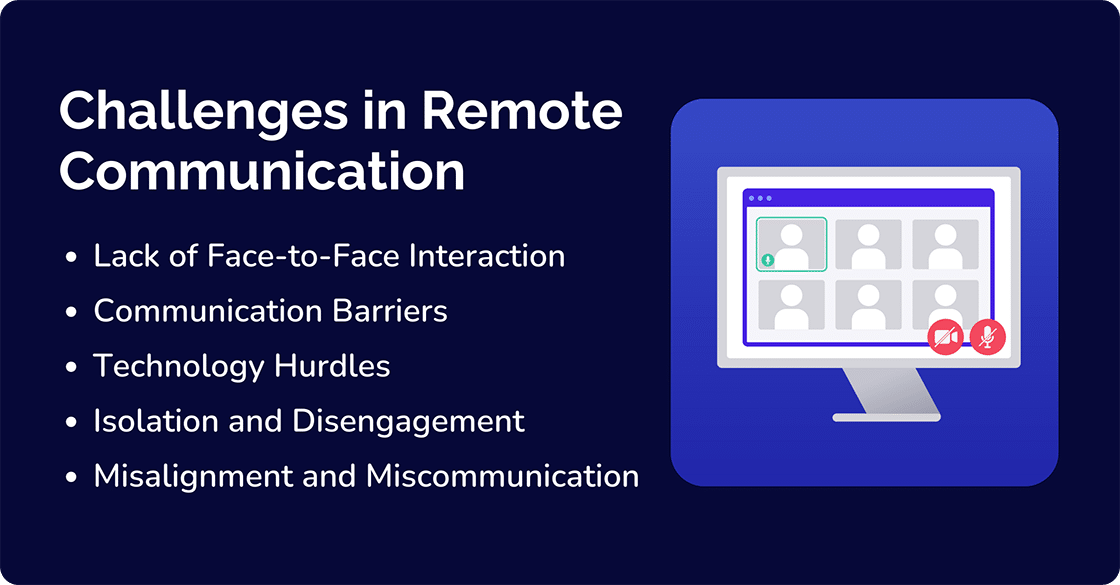
It is difficult to navigate how to set employee expectations for remote work. How is everyone supposed to come together when they aren’t in the same location? Experts suggest several best practices.
Consistency is a crucial element of effective communication for remote workers. This is a great way to make it consistent and open, with opportunities for questions when they have them. Talk about what projects are on the horizon, what each person is working on, general company updates, and anything else that’s relevant. If you want even more insight into what is going on with them, they could be camera-on mandatory.
People crave structure. That’s why it’s so important to establish a routine. It makes life a lot easier when there are times that are set aside to be productive. If people have set times that they need to work, then there is less guessing about what they are doing with their time. For example, making sure that everyone works from 9 am to 5 pm from Monday to Friday (their time) makes it easier for everyone to align.
To-do lists or task lists create targets that people should hit while they are working. That way, you can eliminate as many guessing games as possible. Your remote employees then know what they should be doing and you know what rate they are working at. Maybe this can be a part of the weekly communication Email Blast they receive.
Establish clear, comprehensive communication policies that outline expectations for response times, preferred communication channels, and guidelines for effective remote communication. Be sure to ensure a shared understanding among team members.
Utilize a well-integrated set of communication and collaboration tools. These can include video conferencing, messaging platforms, and project management systems. Ultimately, you want to streamline communication, enhance connectivity, and facilitate efficient remote collaboration.
Foster a sense of connection and teamwork by encouraging regular team meetings, virtual check-ins, and open communication channels. Emphasize the importance of building relationships, and provide opportunities for team members to share updates, feedback, and ideas.
Organize virtual team-building activities, social events, and online forums to maintain a sense of camaraderie and combat feelings of isolation. These activities contribute to a positive remote work culture, boosting employee morale and engagement.
Successful remote communication is built on high levels of engagement. But if you don’t know if they are engaging, how do you even start?
There are many internal communication platforms that measure engagement in order to get everyone reading and actively responding to messages.
A lifeline that is cut when you’re not face-to-face acknowledges that they have received/read the message. But there is a way to measure this in an easy and effective way. If you put acknowledgements within Email Blasts, there is a number that tells you how employees are engaging with them, especially if they are important communications that are not as gripping.
Remote communication can also benefit from individualized messaging. How are people supposed to feel good about the work they are doing, the company they are working for, and the branding behind it if they just feel like an email address among hundreds or thousands? Custom communication means each person is getting content based on attributes (interests, location, position, and others). This makes each employee feel important.
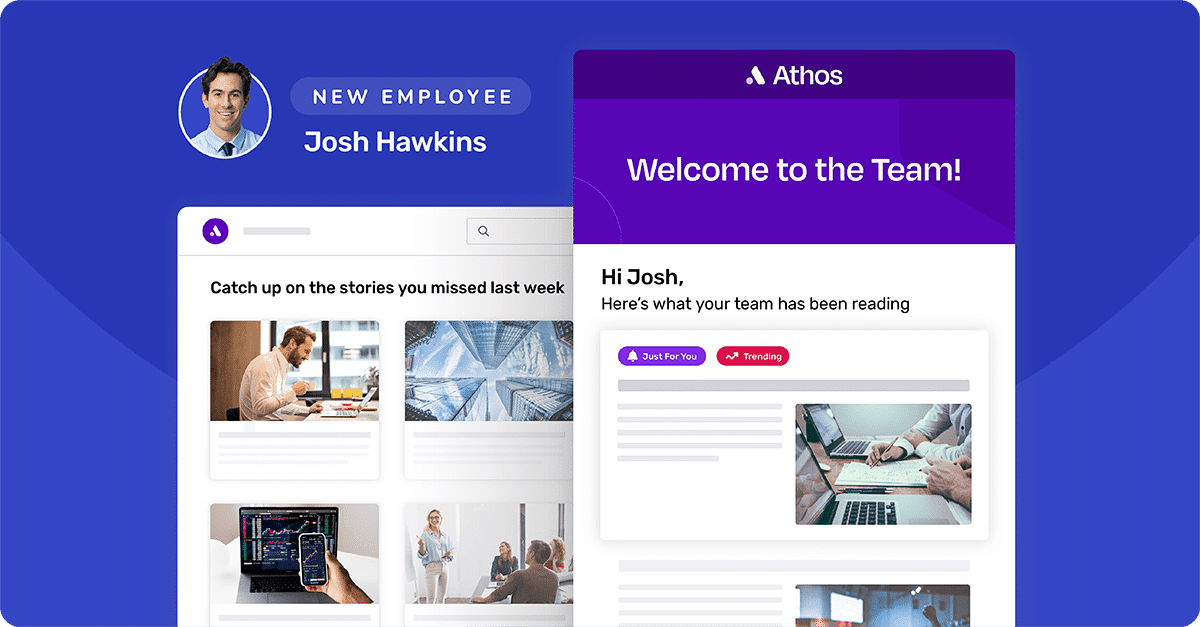
For example, systems like Broadcast allow for personalization fields. This allows people to send emails (or Broadcast Email Blasts) that look like they are sent individually. According to Cerkl’s product stats, personalized emails always perform better than those with default settings. Data shows that the click-through rate and open rate for default setting performed much lower for every sending frequency (up to 60x lower for daily delivery). Omnichannel capabilities elevate personalization even more. Once a piece of content is consumed in one channel, it won’t appear on the rest of them.
Deskless remote workers can also be a major barrier to navigate. Without having a “basecamp”, it seems difficult to keep communication streamlined. However, with an employee mobile app, every employee has an internal communication platform to receive updates and ask questions without it being connected to a desktop, leading to a better experience for your remote workforce.
https://vimeo.com/729699473
Cerkl Broadcast has superior solutions for email-less and deskless employees. It doesn’t matter where your remote teams are, you can keep them engaged 24/7, keeping them informed, satisfied, and happy.
Find out how successful companies set clear and realistic employee expectations for remote work and improve remote communication. Get the template they use for free, no risk, and with no commitment.
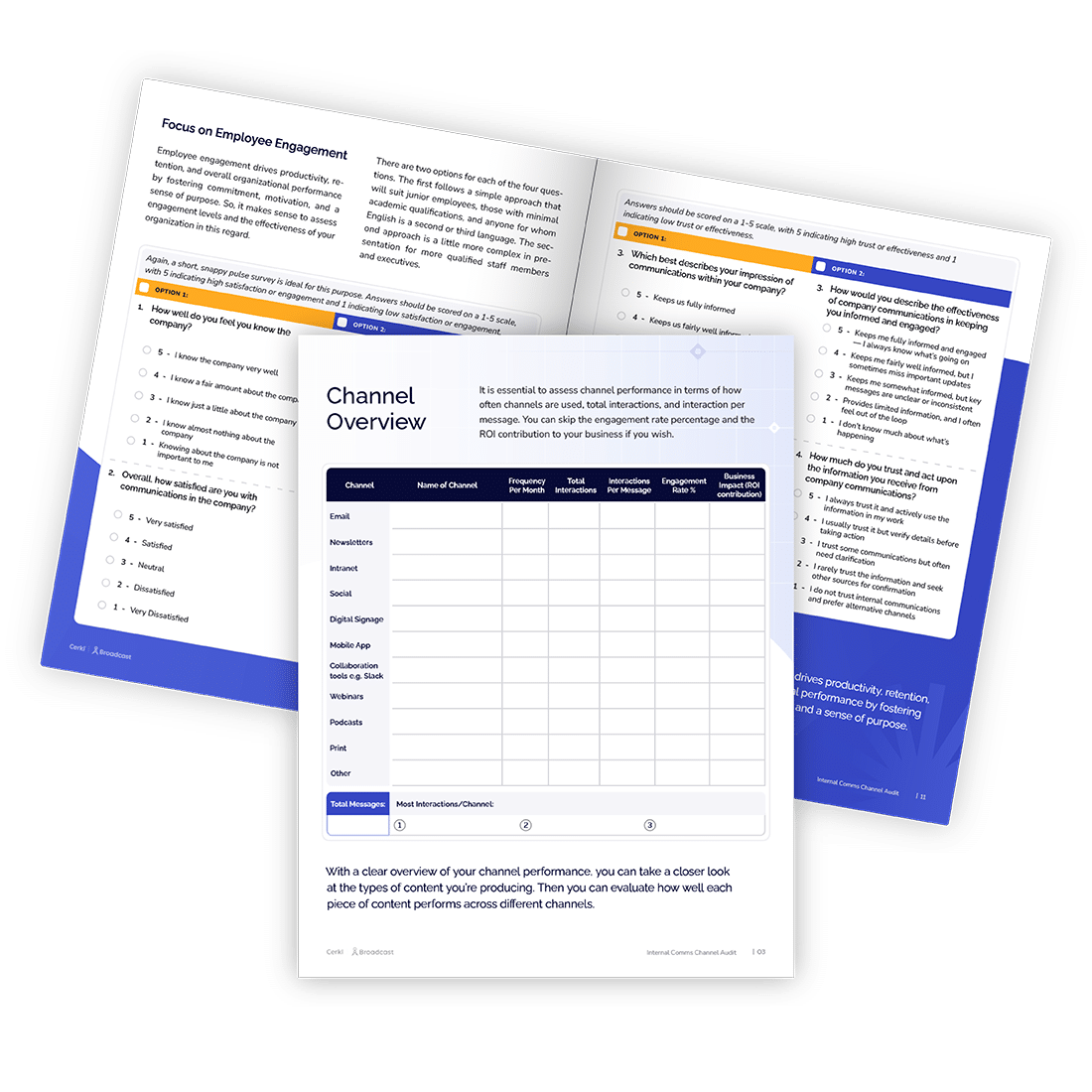
Upgrade your company’s internal comms to enhance employee communication
Want feedback? If you complete it, we will provide you with free, personalized advice on how to improve. Get started using your email.
What is the meaning of remote communication? Remote communication refers to the exchange of information and ideas between individuals or teams that are physically separated. It is often facilitated by digital tools and technology.
What are the two types of communication in remote work? The two types of communication are synchronous and asynchronous. Synchronous communication occurs in real-time through methods like video calls or instant messaging. Asynchronous communication involves the exchange of messages or information without the need for immediate responses, such as email or collaborative documents.
How do you communicate with a team remotely? There are many ways to communicate remotely with teams. Popular methods include video calls and various messaging platforms. Emails work well because they can ensure clarity, encourage regular check-ins, establish clear objectives, provide constructive feedback, and maintain an open channel for questions and discussions. Setting up regular virtual meetings, both one-on-one and with teams, can help to maintain a sense of connection and alignment.
What is an example of virtual communication? A good example of virtual communication involves using video conferencing software for a collaborative project. Teams conduct regular video meetings, share screens to discuss progress, and use chat features for quick updates and discussions. This allows for face-to-face interaction, effective collaboration, and real-time problem-solving despite team members being in different locations.
How is communication important for remote work? Communication is crucial for remote work because it fosters collaboration, maintains team cohesion, clarifies expectations, ensures alignment on tasks, and helps to prevent isolation. Clear and consistent communication is essential for productivity, problem-solving, and maintaining a sense of connection among remote team members.

Upgrade your company’s internal comms to enhance employee communication